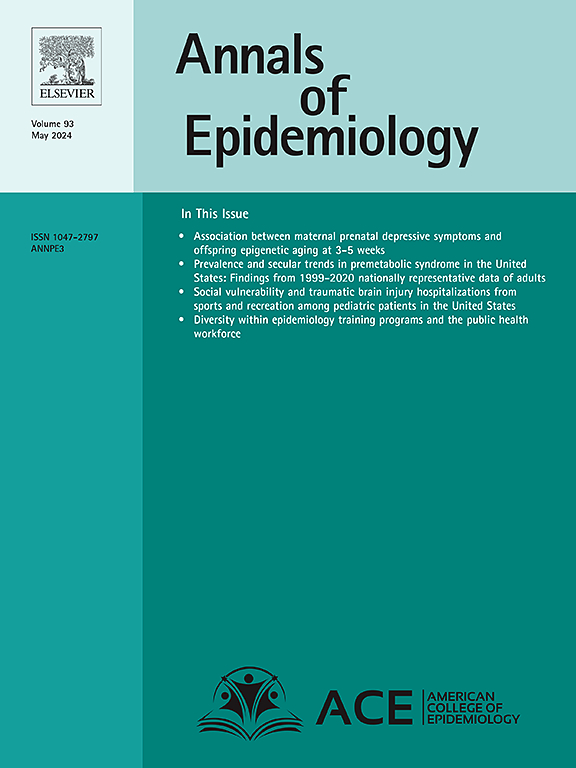Trajectories of food bank use among new users in Quebec, Canada: Evidence from the pathways study
IF 3
3区 医学
Q1 PUBLIC, ENVIRONMENTAL & OCCUPATIONAL HEALTH
引用次数: 0
Abstract
Purpose
This study describes trajectories of food bank (FB) use among new users in relation with change in food insecurity status.
Methods
The Pathways Study followed 1001 new FB users across four regions of Québec, Canada, over a two-year period, from September 2018 to January 2020. Participants reported past-month FB use in two consecutive interviews following a baseline assessment, leading to 24 consecutive measures of monthly FB use. Household food insecurity was measured using the Household Food Security Survey Module. Group-based trajectory analysis was used to identify trajectories of FB use.
Results
Six trajectories were identified, including chronic use (30 % of the sample), infrequent use (11 %), withdrawal after recruitment (22 %), fast withdrawal (14 %), slow withdrawal (15 %), and intermittent (8 %). Chronic FB usage was associated with lower education levels and rural residency, suggesting economic challenges and limited opportunities in such areas. About a third of FB users changed their status from food insecure at baseline to food secure at the end of follow-up.
Conclusions
These findings challenge the perception of FB users as a homogenous group and emphasize the need for tailored approaches to address food insecurity.
加拿大魁北克省新用户使用食物银行的轨迹:来自路径研究的证据
目的:本研究描述了食物银行(FB)在新用户中的使用轨迹与粮食不安全状况的变化之间的关系。途径研究在2018年9月至2020年1月的两年时间里,跟踪调查了加拿大魁省四个地区的1001名新facebook用户。在基线评估后,参与者在连续两次访谈中报告了过去一个月的FB使用情况,从而连续测量了24个月的FB使用情况。使用家庭粮食安全调查模块衡量家庭粮食不安全状况。使用基于群体的轨迹分析来识别FB的使用轨迹。结果确定了6种轨迹,包括长期使用(占样本的30 %)、不经常使用(11 %)、招募后停药(22 %)、快速停药(14 %)、缓慢停药(15 %)和间歇性停药(8 %)。长期使用FB与低教育水平和农村居民有关,表明这些地区面临经济挑战和机会有限。大约三分之一的facebook用户在随访结束时将他们的状态从基线时的粮食不安全改为粮食安全。这些发现挑战了FB用户是一个同质群体的看法,并强调需要采取量身定制的方法来解决粮食不安全问题。
本文章由计算机程序翻译,如有差异,请以英文原文为准。
求助全文
约1分钟内获得全文
求助全文
来源期刊

Annals of Epidemiology
医学-公共卫生、环境卫生与职业卫生
CiteScore
7.40
自引率
1.80%
发文量
207
审稿时长
59 days
期刊介绍:
The journal emphasizes the application of epidemiologic methods to issues that affect the distribution and determinants of human illness in diverse contexts. Its primary focus is on chronic and acute conditions of diverse etiologies and of major importance to clinical medicine, public health, and health care delivery.
 求助内容:
求助内容: 应助结果提醒方式:
应助结果提醒方式:


